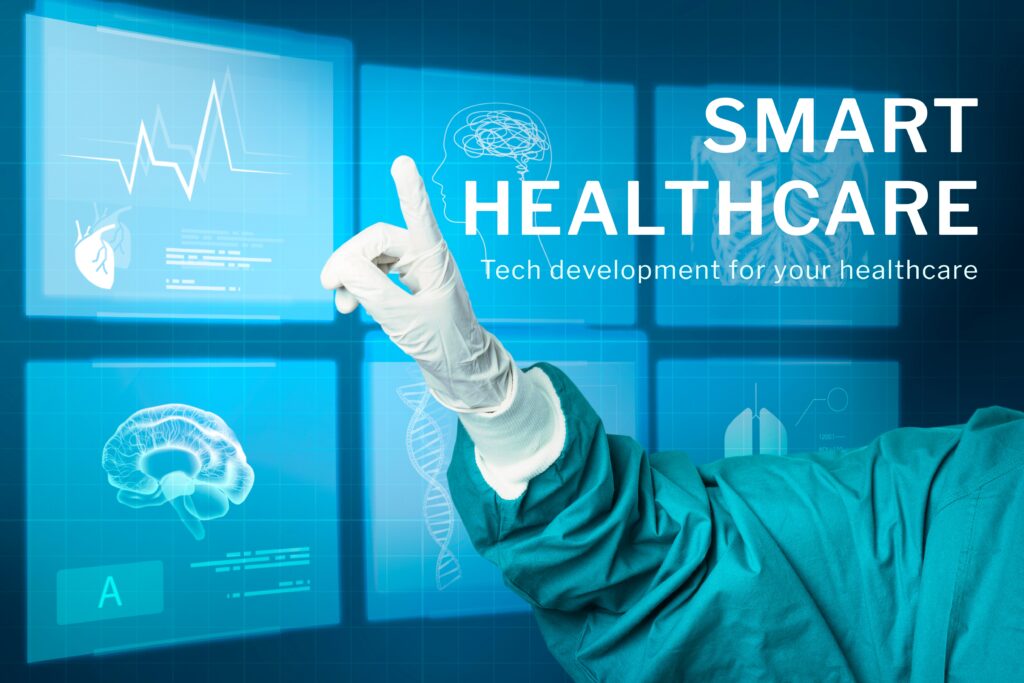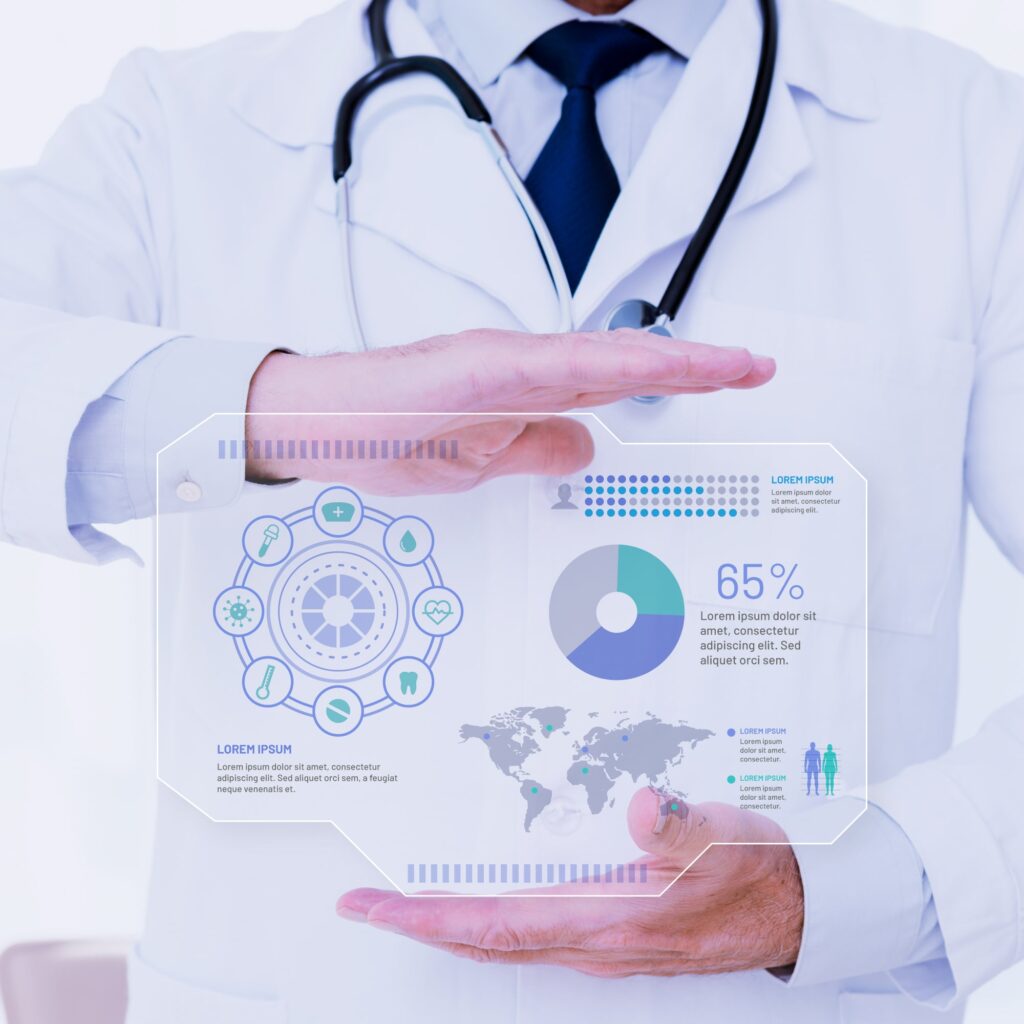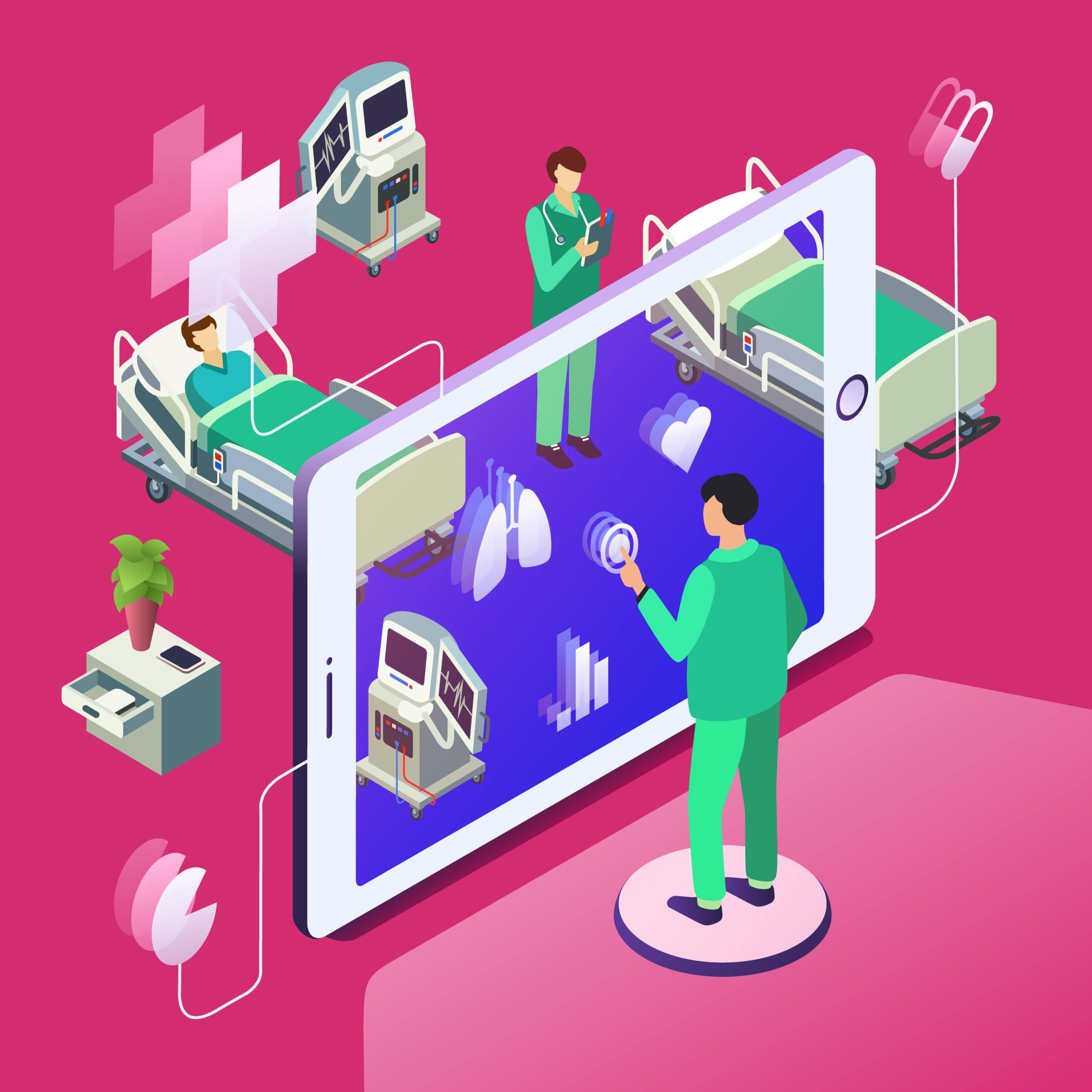In today’s fast-paced healthcare landscape, where every moment counts, technology is emerging as a true lifesaver. Among the most transformative innovations of our time is the Internet of Things (IoT). This remarkable concept is reshaping healthcare by connecting devices, collecting data, and elevating patient care to unprecedented levels. In this article, we’ll explore the captivating realm of IoT in healthcare, discovering how it’s changing the game for patients and healthcare professionals alike.
Table of Contents
Introduction to IoT in Healthcare
The Internet of Things (IoT) is a network of interconnected physical devices, from smartwatches to advanced medical equipment, that gather and exchange data. In healthcare, IoT links these devices to a centralized system, enabling healthcare providers to monitor and manage patient data in real-time. This leads to more accurate diagnoses, personalized treatments, and improved overall patient outcomes.

The IoT Ecosystem in Healthcare
The IoT ecosystem in healthcare consists of three main components: sensors and devices, data analytics, and healthcare professionals. Sensors and devices continuously collect patient data, which is then transmitted to a central platform. Healthcare professionals analyze and interpret this data, using it to make informed decisions regarding patient care.
Benefits of IoT in Healthcare
Enhanced Patient Care
One of the most significant advantages of IoT in healthcare is its ability to enhance patient care. With continuous monitoring, doctors can detect early warning signs of health issues, enabling timely intervention and personalized treatment plans. For example, patients with heart conditions can benefit from wearable devices that track their heart rate and promptly alert them and their healthcare providers to any irregularities.
Remote Monitoring
IoT enables remote patient monitoring, a boon for those with chronic conditions. Patients can be monitored in the comfort of their homes, reducing hospital stays and healthcare costs. For instance, diabetic patients can use IoT-enabled glucose monitors that transmit real-time data to their healthcare providers, facilitating immediate adjustments to their treatment plans.
Predictive Analytics
IoT-driven predictive analytics can forecast disease outbreaks, patient admissions, and equipment maintenance needs, allowing hospitals to allocate resources efficiently. For example, analyzing data from IoT-connected thermometers and wearables can help healthcare organizations detect early signs of a flu outbreak in a specific area and take preventive measures.
Challenges and Concerns
While IoT offers immense potential, it also presents challenges, including data security and privacy concerns, integration complexities, and cost considerations. Protecting patient data from cyber threats and ensuring smooth integration with existing healthcare systems are top priorities. Robust cybersecurity measures and adherence to regulations like HIPAA are essential.
Real-world Applications
Wearable Health Devices
Wearable devices like fitness trackers,smart glasses and smartwatches have gained popularity. They monitor vital signs, track physical activity, and offer real-time health insights. For example, fitness enthusiasts can wear smartwatches that monitor their heart rate, count their steps, and provide personalized exercise recommendations.
Smart Hospitals
IoT is transforming hospitals into smart, efficient spaces. Automated temperature and lighting controls, patient tracking, and asset management improve hospital operations. Smart beds equipped with IoT sensors can alert nurses when patients need repositioning, reducing the risk of bedsores.
Medication Adherence
IoT-enabled pill dispensers and medication reminder apps help patients adhere to prescribed schedules, reducing errors and improving treatment outcomes. Seniors can use smart pill dispensers that release the correct medication dosage at the right time and send reminders to their smartphones.
IoT and Telemedicine
Telemedicine has surged, especially post-COVID-19. IoT plays a crucial role by facilitating remote consultations, monitoring patient health, and providing data to healthcare professionals. Patients can have virtual consultations, during which IoT-connected devices like digital stethoscopes and high-resolution cameras offer real-time data for diagnosis.

The Role of Artificial Intelligence
Artificial intelligence (AI) complements IoT by analyzing vast healthcare data to identify trends, predict patient needs, and assist in diagnosis and treatment. For instance, AI can analyze data from wearables to predict cardiac events in patients with heart disease.
IoT and Electronic Health Records (EHRs)
IoT integrates seamlessly with electronic health records (EHRs), granting healthcare providers easy access to patient data. This enhances communication and coordination among healthcare teams. IoT devices update EHRs with vital signs, lab results, and medication histories, providing a holistic view of patient health.
Regulatory Framework and Compliance
As IoT adoption in healthcare grows, regulatory bodies establish guidelines to ensure data security and patient privacy. Compliance with regulations like HIPAA is essential. Healthcare organizations must prioritize staff cybersecurity training to mitigate IoT-related risks.
The Future of Healthcare: IoT Trends
The future of healthcare is intertwined with IoT. Emerging trends include advanced telemedicine solutions, AI-powered diagnostics, and the proliferation of IoT-enabled medical devices. Expect AI-driven chatbots that offer personalized health advice based on IoT data and a surge in innovative healthcare applications and devices as IoT technology becomes more accessible.
Patient Empowerment Through IoT
IoT empowers patients to manage their health actively. Real-time data access enables informed decisions about lifestyle and treatment options. For instance, diabetic patients can monitor their blood sugar levels using IoT-connected glucometers and adjust their diets and medications accordingly.
IoT and Healthcare Accessibility
IoT can improve healthcare accessibility, especially in remote areas. Telemedicine and remote monitoring bridge gaps and provide healthcare services to underserved populations. Rural areas with limited access to healthcare facilities benefit from IoT-enabled telemedicine platforms, saving time, costs, and ensuring timely care.
Global Impact of IoT in Healthcare
IoT’s impact transcends borders. Developing countries benefit from cost-effective solutions, and developed nations enhance healthcare efficiency. In low-resource settings, IoT diagnostic devices offer essential healthcare services without extensive infrastructure, making healthcare accessible to all.
Ethical Considerations in IoT in Healthcare
Ethical concerns, including data ownership and consent, must be addressed as IoT evolves in healthcare. Striking a balance between innovation and privacy is vital. Patients should control their data and be fully informed about its collection and use. Healthcare organizations must be transparent about data practices and prioritize data security and confidentiality.
Conclusion: A Healthier Tomorrow with IoT
In conclusion, IoT in healthcare is ushering in an era of patient-centric, data-driven medicine. From enhanced patient care to patient empowerment, the benefits of IoT are profound. However, addressing challenges and ethical concerns is essential to ensure IoT continues to revolutionize healthcare positively. Embracing IoT’s potential while safeguarding patient data is the key. The future of healthcare, illuminated by the Internet of Things, is exceptionally promising.
FAQs (Frequently Asked Questions)
- Is IoT secure in healthcare?
- Yes, IoT in healthcare can be secure with robust cybersecurity measures, including encryption, authentication, and regular security audits to protect patient data.
- How does IoT improve patient outcomes?
- IoT enables real-time monitoring, early intervention, and reduced hospitalizations by continuously monitoring patient health data, facilitating timely responses to health issues.
- What are the cost implications of implementing IoT in healthcare?
- While there are initial costs, the long-term benefits, such as reduced hospital stays and improved efficiency, often outweigh the expenses.
- What role does AI play in IoT healthcare applications?
- AI analyzes IoT-generated data to identify patterns and predict patient needs, optimizing treatment plans and enhancing healthcare delivery.
- How can IoT improve healthcare accessibility in remote areas?
- IoT enables telemedicine and remote monitoring, bringing healthcare services to remote and underserved regions, saving time and costs while ensuring timely care for all.

